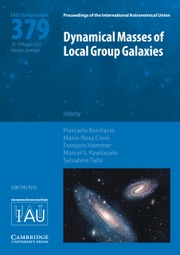Crossref Citations
This article has been cited by the following publications. This list is generated based on data provided by Crossref.
Bursa, Michal
2006.
Modulation of high-frequency quasi-periodic oscillations by relativistic effects.
Proceedings of the International Astronomical Union,
Vol. 2,
Issue. S238,
p.
333.

